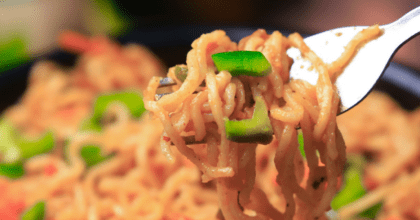Cutting back on salt: A whopping 94% of urban Chinese consumers have reduced their salt intake
With families in China coming together to feast during the Lunar New Year (5th February) celebrations, new research from world’s leading market intelligence agency Mintel, reveals that Chinese consumers are cutting down on their salt intake amidst rising health concerns.
In a country where most of its regional dishes are heavy on flavour, Mintel reveals that health is taking the lead over flavour as the majority (94%) of urban Chinese consumers have reduced their salt intake in the last six months*. Among consumers who have cooked in the last six months, efforts taken towards salt reduction include using less salt when cooking (55%), while over a third are using less MSG (Monosodium Glutamate) (37%) as well as soy sauce (36%). In addition, two in five (38%) consumers are reducing their salt intake by consuming less processed food (eg instant noodles, sausage, chips).
Crystal A, Food and Drink Research Analyst, Mintel China Reports, said:
“Driven by increasing health concerns, Chinese consumers are taking care over their diets and trying to avoid ‘bad’ elements like salt and MSG. Although it is likely that majority of consumers don’t exactly know the daily recommended salt intake, it seems that most actually understand the dangers of a high-salt diet and are trying to limit their daily intake. Today’s consumers are also more knowledgeable and attentive about product information. Brands should look into MSG-free flavour enhancements and leverage them, particularly through their marketing efforts, as consumers become more sensitive towards product information.”
The need for ‘clean labels’
As consumers are now avoiding products that include unhealthy elements such as salt and MSG, together with the much debated GMO (Genetically Modified Organism), clean label is becoming a must for Chinese consumers, particularly when it comes to parents.
Indeed, when it comes to the nation’s much loved soy sauce, as many as 33% of consumers who are married with one kid, consider if a light or dark soy sauce contains GMO ingredients before making a purchase, while just a quarter (25%) of married couples without children do the same. Meanwhile, a quarter of married consumers with one child consider the level of sodium/salt content (25%) and whether it has MSG (24%).
“Consumers’ increasing awareness of their salt and MSG consumption is also affecting how they are using and purchasing the type of seasonings. Today’s consumers are no longer willing to compromise on healthiness for better flavours—and this has made clean labels pivotal in their daily diets. For instance, they focus on whether the product contains GMO ingredients and MSG, and whether it has a high content of salt. This is a sentiment that’s more prevalent among consumers with kids in their families. As such, soy sauce, and other seasoning brands, can look into launching products featuring clean label and zero additives to fill the gap in the Chinese marketplace.” continued Crystal.
Bonding through cooking
Finally, Mintel reveals that this Lunar New Year will see more families bonding through their love for cooking as it becomes an activity that brings families together.
Mintel research reveals that consumers are sharing their cooking responsibilities at home, especially those who live with their parents, spouses or children. Almost half (47%) of consumers living with their parents say that they share the cooking responsibility with their family members, while two in five (40%) consumers living with their children and 38% of those living with their spouse share the same responsibility.
While females still dominate the responsibility of household cooking, male consumers are also helping out at home. Breaking down the gender barriers, over two in five (42%) females say they share the responsibility of cooking with their family members, rising to three in five (59%) females aged 20-24. On the other hand, 38% of males overall say that they share the cooking responsibility with their family members.
“Consumers living with their parents, spouses and kids are more likely than not to share the responsibility of cooking at home which may well enhance the family atmosphere. Families with kids may well be choosing to cook and eat at home because that way they are able to control the quality of foods and other condiments that cater best to the needs of their kids’ overall health and wellbeing. Cooking and eating at home, today, is more a leisure activity for the family to do together; it is no longer just about filling the belly, but is something that can strengthen the bonds between family members, couples, as well as between parents and their kids.”
*2,100 internet users aged 20-49 who have done the cooking in the last 6 months
Press review copies of Mintel’s Chinese Style Cooking Habits China 2018 report and interviews with Crystal A, Food and Drink Research Analyst, Mintel China Reports, are available on request from the press office.
For the latest in consumer and industry news, top trends and market perspectives, stay tuned to Mintel News featuring commentary from Mintel’s team of global category analysts.
-
Mintel StoreGet smart fast with our exclusive market research reports, delivering the latest data, innovation, trends and strategic recommendations....View reports
-
Mintel LeapMintel Leap is a revolutionary new AI-powered platform that will transform your research process....Book a demo







































